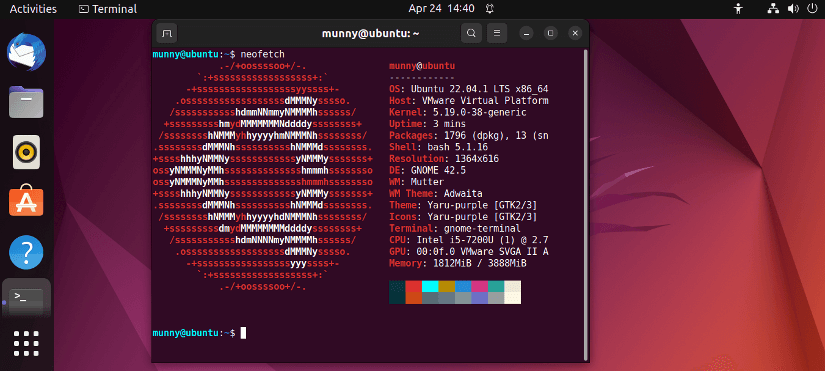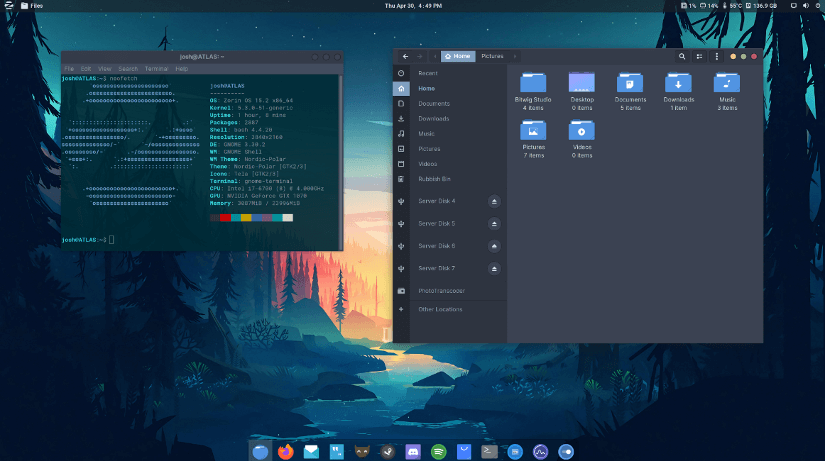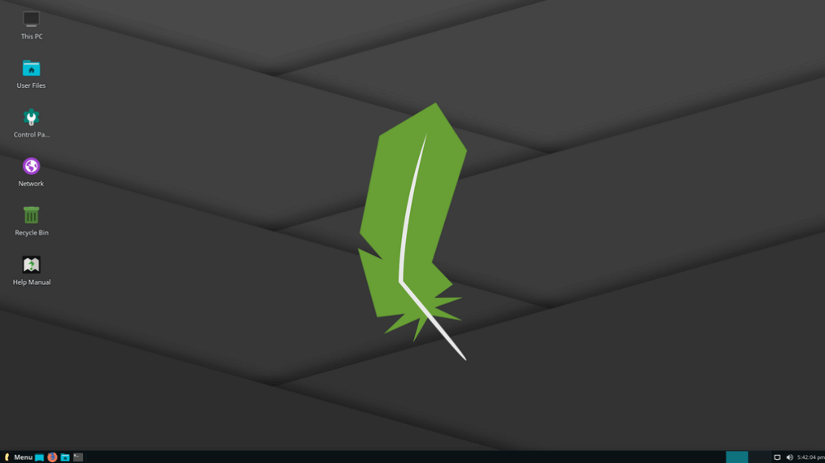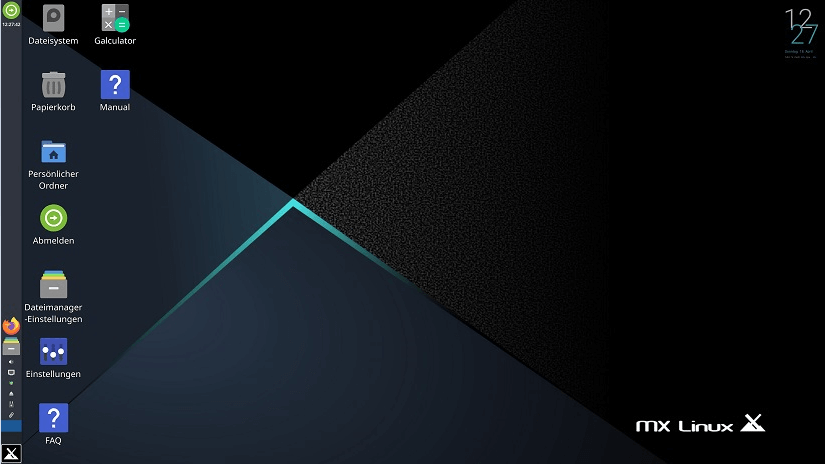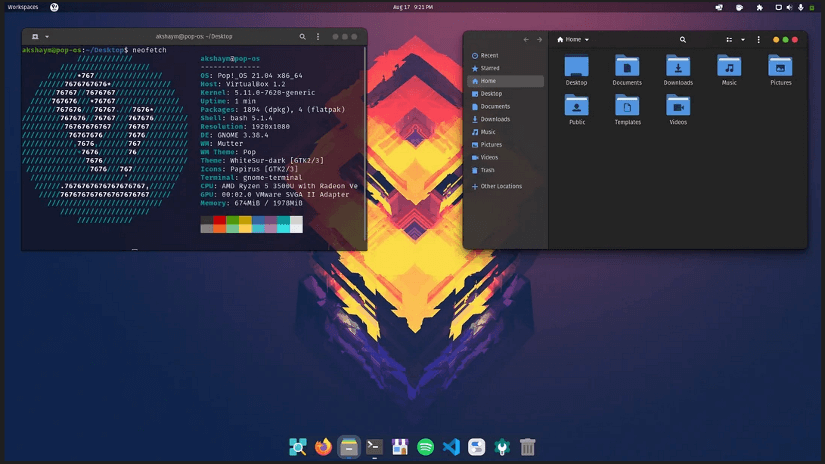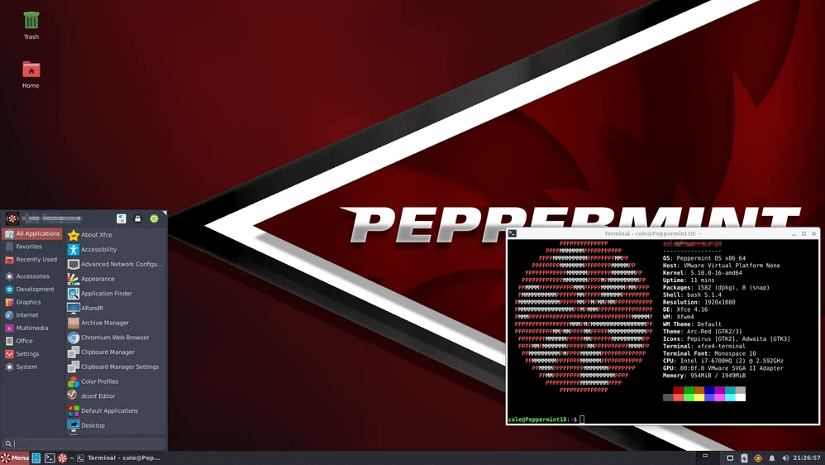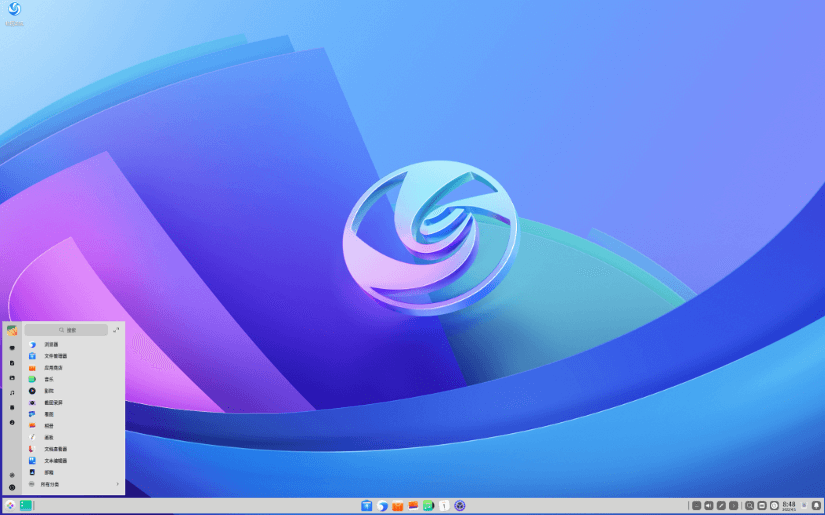FUNDAMENTALS A Complete Guide for Beginners

For beginners, choosing the right Linux distribution or distro can be a daunting task with the wide range of options available. As each distribution has its own set of features, strengths, and weaknesses, which can make the decision-making process overwhelming. In this article, I will talk about some of the best Linux distros for beginners, while taking into account their user-friendliness, community support, software availability, and hardware compatibility.
Factors to Consider for Choosing Linux Distro for Beginners
Choosing a Linux distribution as a beginner can be overwhelming because of the many available options. Here are some factors beginners should be concerned about while selecting a Linux distro:
- User-friendliness: Choosing a more user friendly distro that is easy to install & use, such as Ubuntu or Linux Mint.
- Hardware Requirements: Make sure that the Linux distro you choose is compatible with your computer’s hardware.
- Purpose: Take one according to your purpose, for instance, whether you want it for desktop purposes or Server purposes.
- Community Support: Having a strong and bigger community can help a beginner with faced challenges to overcome.
- Security: Security is important for any OS. So be sure to choose a secure one.
- Pre-installed Software: Some distros come with pre-installed software that saves the trouble of searching and downloading.
- Software Availability: Check the availability of software in the distro’s software repository, and ensure that the software you need is available.
- Desktop Environment: Choose the one with a Desktop environment you find easy to use and visually appealing.
- Updates & Customizability: Choose a Linux distro that has a reliable & frequent update schedule. Also, find one with more customization options if you are into more customizing options.
Top 10 Linux Distros for Beginners
In the following article, I will discuss the ten best Linux distros advised for beginners with their official download page link. I will provide their key features, also pros & cons so that you can get a clear idea about them.
1. Ubuntu
The most popular & well-heard Linux distro is the open-source OS Ubuntu. Maximum new users who are switching to Linux OS try Ubuntu due to its ease of use, user friendly interface, large community, wide range of software & lastly, all the free features. The latest version is Ubuntu 23.10.
Download Ubuntu
Click here to visit Ubuntu‘s official download page.
Key Features of Ubuntu
- Large software repository: Ubuntu has a vast repository of software packages that can be easily installed and managed.
- Regular releases: It has a fixed release schedule, with new versions released every six months, and Long Term Support (LTS) versions released every two years.
- Server support: Also popular as a server operating system with support for a wide range of server applications.
- Strong security: Features like AppArmor and default-enabled firewall have made Ubuntu security-focused.
- Community-driven: Has a large and active community of users and developers who contribute to its support & development.
Pros of Ubuntu
- Free & open-source distro.
- Lots of free software in the software center.
- Built-in Snap support for installing numerous applications.
- Vast community.
- Lots of flavors to suit users’ needs.
- Compatible with most of the hardware.
Cons of Ubuntu
- Not very useful for some specific programs (Labview, Proteus).
- Need manual installation which a new user may find challenging.
- It may have some compatibility issues with certain programs or devices. Also, some drivers may not exist in Ubuntu.
- The repository may not be up to date with the latest versions of software.
2. Linux Mint
Linux Mint is a perfect Linux-based distro for beginners due to its Windows-like familiar interfaces. Moreover, it performs great with older hardware and gained improvements over Ubuntu over time. The popular Linux Mint edition is the Linux Mint Cinnamon. The latest release is Linux Mint 21.3 Virginia.
Download Linux Mint
Click here to visit Linux Mint‘s official download page.
Key Features of Linux Mint
- Multiple desktop environments: Linux Mint is available with a choice of desktop environments, including Cinnamon, MATE, and Xfce.
- Multimedia support: Includes a range of multimedia codecs and plugins, making it possible to play a wide range of audio & video formats.
- Community-driven: Has a larger user & developer community.
- Wide range of tools & utilities: Has a wide range of tools & utility applications.
Pros of Linux Mint
- It has an update manager which allows users to choose the level of updates they want to apply.
- It provides guides to install and configure the system.
- It comes with all the essential applications, with no requirement for any additional configuration or installation.
- A developer can customize appearance and behavior using themes, icons, widgets, applets, desklets, and extensions.
- It is compatible with most hardware from low-end to high-end.
Cons of Linux Mint
- Might not be compatible with all programs or games.
- No proprietary drivers such as NVIDIA, or ATI, are not included but can be installed via Drive Manager.
- Some software may be outdated due to less frequent updates.
- Doesn’t include Snap by default but can be added easily.
3. Zorin OS
Zorin is an easy Ubuntu-based OS, so you don’t need to learn anything to get started making it a perfect match for beginners. It has several editions including a Lite version for older hardware, a Core version with basic features & a Pro version with additional software & customization options (costs $39). Moreover, it has an education edition specifically designed for use in schools and other educational institutions. The latest release is Zorin OS 17.
Download Zorin OS
Click here to visit Zorin OS’s official download page.
Key Features of Zorin OS
- Zorin Appearance: Zorin OS includes a built-in tool called “Zorin Appearance” that allows users to easily customize the look of their desktop. This tool offers a range of pre-installed themes, icons, and fonts. Moreover, it gives the option to download additional themes from the internet.
- Windows-like interface: Zorin comes with a customizable user interface that resembles Windows, making it an easy transition for users switching from Windows.
- Software availability: Has a large software repository of over 60,000 packages for installation. Moreover, it includes Wine, a compatibility layer that allows some Windows applications to run on Linux.
- Software requirements: Has relatively low system requirements.
- Education edition: It has an education edition specifically designed for use in schools and other educational institutions.
Pros of Zorin OS
- Built on Ubuntu, known for its security & stability.
- Available in over 50 languages.
- Zorin Connect lets you connect seamlessly with Androids.
- Extensive customization options for the user interface.
- The paid version, Zorin OS Pro, includes additional features and support options.
Cons of Zorin OS
- Additional customizations come only in the pro edition.
4. Linux Lite
Linux Lite is a lightweight Linux distribution based on Ubuntu LTS, designed to be user friendly and efficient for older hardware. It comes with a lightweight Xfce desktop environment. The latest release is Linux Lite 6.6.
Download Linux Lite
Click here to visit Linux Lite’s official download page.
Key Features of Linux Lite
- Lightweight: Linux Lite is an extremely lightweight OS version of Linux.
- Minimal system requirements: It has very low system requirements, making it suitable for older or less powerful computers.
- Simplicity: A simple OS that brings several in-house utilities specially designed for new users.
- Wide range of customization: Provides essential software & features with lots of customization options for the users.
Pros of Linux Lite
- Ideal for older hardware.
- Friendly desktop.
- Super lightweight & fast.
Cons of Linux Lite
- Not a fancy-looking or visually appealing desktop.
- Legacy menu-driven desktop.
5. Elementary OS
It is a popular Linux distribution that aims to provide a user friendly, fast, visually appealing operating system for desktops and laptops. As an Ubuntu-based Linux distro, it’s fully customizable. Best beginner Linux distribution for those migrating from MacOS. The latest release is Elementary OS 7.1.
Download Elementary OS
Click here to visit Elementary OS‘s official download page.
Key Features of Elementary OS
- AppCentre: A centralized app store makes it easy to download & install new applications.
- Pantheon Desktop environment: A clean & intuitive interface that includes a dock, a customizable sidebar, and a search for finding things.
- Privacy: Includes app firewall, privacy mode to disable tracking, & a tool for encrypting files.
- Freya & Loki: These are two major releases of Elementary OS, where Freya was released in 2015 based on Ubuntu 14.04 & Loki in 2016, based on Ubuntu 16.04.
Pros of Elementary OS
- Free & visually appealing open-source software.
- macOS-inspired user interface.
- Easy to use, lightweight, & designed to run on low-end hardware.
- Focuses on enhanced user experience.
Cons of Elementary OS
- Limited software availability on Appcentre.
- Slow update cycle.
- Small development team.
- Limited user community.
6. Manjaro Linux
Manjaro Linux is an Arch Linux-based popular Linux distribution. It is designed to be easy to use and accessible for new users, while still providing the power and flexibility of Arch Linux. The latest release is Manjaro 23.1 Vulcan.
Download Manjaro Linux
Click here to visit Manjaro Linux‘s official download page.
Key Features of Manjaro Linux
- Rolling release: Manjaro is a rolling release distribution, which means that users get the latest updates and packages on a regular basis.
- Arch Linux compatibility: It is based on Arch Linux, which means it is compatible with the Arch User Repository (AUR) & can use many same software packages as Arch Linux.
- Multiple desktop environments: Comes with a selection of different desktop environments, including Xfce, KDE Plasma, GNOME, and others.
- Package management: Manjaro uses the ‘Pacman’ package manager, which is a powerful and flexible tool for managing software packages on Linux.
Pros of Manjaro Linux
- User friendly & stable.
- It is free & open-source.
- Users are allowed to choose their preferred desktop environment due to multiple available options.
Cons of Manjaro Linux
- As it does not provide any stable release, its updates may introduce instability and compatibility issues.
- Some hardware may require manual installation of proprietary drivers or firmware.
7. MX Linux
MX Linux is a popular Debian-based Linux distro. It is designed to be lightweight and user friendly, while still providing a powerful and flexible Linux environment. The latest release is MX-23.2 Libretto.
Download MX Linux
Click here to visit MX Linux’s official download page.
Key Features of MX Linux
- Based on Debian: MX Linux is a Debian-based Linux distro.
- Multiple desktop environments: It comes with a selection of different desktop environments which allows users to choose the environment that best fits their preferences and needs.
- Live USB/CD: It can be run from a USB or CD without needing to be installed on a hard drive.
- Extensive software selection: Includes a large selection of software packages including popular applications such as LibreOffice, Firefox, and GIMP.
Pros of MX Linux
- Lightweight, fast & responsive.
- User friendliness makes it great for beginners.
- Stable & reliable.
- Open-source & pre-loaded with natively built apps.
Cons of MX Linux
- Does not provide the dual-boot option for Windows 8 and newer PCs.
- Some software may be outdated.
- Some users may find it too lightweight.
8. Pop OS
Pop!_OS is a Linux distribution based on Ubuntu that is developed by System76, a company that produces Linux-powered computers. It is designed to be a user friendly and customizable OS that is suitable for both new & experienced Linux users. The current release is 22.04 LTS.
Download Pop!_OS
Click here to visit Pop!_OS’s official download page.
Key Features of Pop OS
- System76 hardware integration: Pop!_OS is optimized for System76 hardware, with drivers and tools that are designed specifically for Sytem76.
- Flatpak support: Includes support for Flatpak, which allows users to easily install and manage a wide range of applications.
- Pop Shell: A tiling window manager that provides a more efficient way to manage windows and applications.
- Gaming-Focused: With optimized graphics driver and tools, Pop!_OS provides built-in support for gaming.
Pros of Pop!_OS
- Privacy-focused with full disk encryption, secure boot, and automatic security updates.
- It is free and open-source software, enabling users to view & modify the source code as per their wish.
- Built-in support for NVIDIA.
Cons of Pop!_OS
- Limited software selection compared to some other Linux distributions.
- Not as stable as other Linux distributions.
- Limited support for lesser user community members.
9. Peppermint OS
Debian & Devuan-based Peppermint OS aims to provide a fast, user friendly, and cloud-focused operating system. It works well on older hardware as well as newer computers.
Download Peppermint OS
Click here to visit Peppermint OS‘s official download page.
Key Features of Peppermint OS
- Cloud-focused: Peppermint OS includes a range of cloud-focused applications and tools, including Dropbox, Google Drive, and web-based applications like Gmail & Google Docs.
- Hybrid desktop: Combines web-based and traditional desktop applications, offering a unique hybrid desktop environment.
- Customizable: Highly customizable with a wide range of options available through the Openbox desktop environment & other tools.
- Low system requirements: As it needs low system requirements, it can be run well on older hardware as well as on newer computers.
Pros of Peppermint OS
- It is an open-source operating system.
- It provides a user friendly interface.
- Peppermint OS is a Lightweight distro.
Cons of Peppermint OS
- Some users may prefer a more traditional or web-based desktop environment instead of a hybrid desktop environment.
- Not as stable as some other Linux distributions.
10. Deepin
Deepin is a Linux distribution that originated in China and is based on the Debian “Stable” branch. It is known for its elegant and modern desktop environment and a range of user friendly features.
Download Deepin
Click here to visit Deepin‘s official download page.
Key Features of Deepin
- Modern desktop environment: Deepin features a modern visually appealing & easy to use desktop environment.
- Cloud integration: Includes a range of cloud-based features and tools, such as deepin Cloud Sync, that allows user to sync their files and settings across devices.
- Multimedia support: Supports a wide range of multimedia formats and codecs.
- International support: Deepin has been translated into many languages, making it accessible to users around the world.
Pros of Deepin
- Themable window decoration has made deepin.
- Stable frequent release updates help users to stay security updated.
- Come with a deepin installer making it easy for users to install.
Cons of Deepin
- Some users face problems with the Virtual Box.
- While installing using the deepin installer, it asks for location info, which some users feel uneasy about providing.
Comparative Analysis of Linux Distros for Beginners
To get a comprehensive and comparative overview of the ten best distributions for beginners that have been discussed in this article, kindly go through the following table:
To sum up, choosing the right Linux distribution can make a big difference in the experience of a beginner user. Even though the choice of the distro ultimately depends on individual preferences and requirements, still choosing a distro with a user friendly interface, pre-installed software, and excellent community support will increase the user’s adventure. Here, I tried discussing the distros which provide them all. The best starter Linux distros are Linux Mint, Ubuntu, Zorin OS, Manjaro Linux, Elementary OS, MX Linux, etc. They are considered best for their user-friendliness, security sureness, easy compatibility with hardware & vast availability of software. Several Linux distributions are suitable for programming beginners. Anyway, Fedora is a common suggestion for beginners who want to try something other than Debian or Ubuntu-based. As it resembles RHEL and CentOS, widely used server distros. Some of the fastest Linux distros are Absolute Linux, Arch Linux, Linux Lite, Puppy Linux, Lubuntu, antiX Linux, Xubuntu, MX Linux, etc. They are considered faster due to their lightweight, faster boot & processing time, minimal installation, and Kernel optimization. Yes, Linux is not hard to learn. While it may have a reputation for being more technical and challenging to use compared to other OS, there are many beginner-friendly distros available that are designed to be easy to use and user friendly. Such as Ubuntu, Linux Mint, Manjaro Linux, Deepin, MX Linux, etc.
Distributions
Based On
Default Desktop Environment
Size on Disk
Release Cycle
Ubuntu
Debian
GNOME
~15 GB
6 months
Linux Mint
Ubuntu
Cinnamon, MATE, Xfce
~10 GB
6 months
Zorin OS
Ubuntu
GNOME
~10GB
6 months
Linux lite
Ubuntu
Xfce
~5GB
6 months
Elementary OS
Ubuntu
Pantheon
~15GB
6 months
Manjaro Linux
Arch
Xfce, KDE Plasma, GNOME
~10GB
Rolling
MX Linux
Debian
Xfce
~5GB
1 year
Pop!_OS
Ubuntu
GNOME
~15GB
6 months
Peppermint OS
Ubuntu
Xfce
~5GB
6 months
deepin
Debian
Deepin
~15GB
6 months
Conclusion
People Also Ask
What is the best starter Linux distro?
Which Linux is best for programming beginners?
What is the fastest Linux distro?
Should a beginner use Linux?
